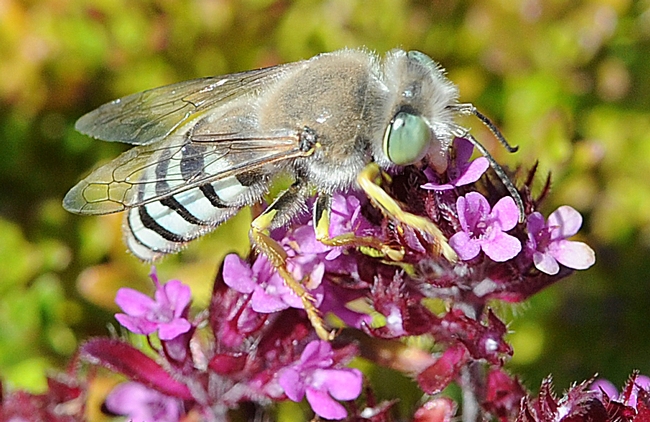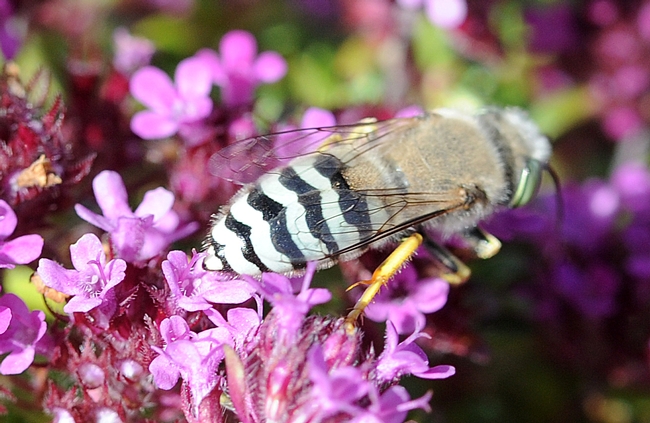If it looks like a bee, sips nectar like a bee, and buzzes away like a bee, that doesn't mean it's a bee.
Last weekend we visited a Fort Bragg nursery specializing in succulents, and these "little white bees" were all over the red flowering thyme (Thymus serphyllum).
"Little white bees." That's what nursery personnel and visitors called them.
Not bees, though. Wasps.
But both in the order Hymenoptera.
Native pollinator specialist Robbin Thorp, emeritus professor of entomology at UC Davis, identified it as a sand wasp, genus Bembix, probably B. americana.
"These wasps fly very rapidly and frequently visit flowers," Thorp said.
Being a wasp, it's a predator and a carnivore, not a vegetarian like the honey bee. It preys upon flies, hover flies (aka flower flies or syrphids), tachinid flies, lacewings, and other critters, taking the carcasses back to its ground nest to feed its larvae.
The sand wasp digs its nest holes in the sand, thus its name. Its abdomen looks something like a basketball referee: except instead of black and white stripes, it sports curvy black and white stripes.
Bug Guide indicates that North America is home to 19 species of sand wasps.
This one (below) seemed to be sipping nectar (adults feed on nectar).
Probably a "matter of thyme" before it nailed a fly.
Attached Images:

Sand wasp on red flowering thyme. (Photo by Kathy Keatley Garvey)

Abdomen of sand wasp: note the black and white curvy stripes. (Photo by Kathy Keatley Garvey)